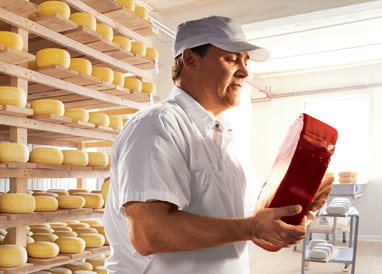Why Floridia Cheese Thomastown Is a Masterpiece in Melbourne Made Cheese
Why Floridia Cheese Thomastown Is a Masterpiece in Melbourne Made Cheese
Blog Article
Unlocking the Secrets of Artisanal Cheese Making: A Step-by-Step Do It Yourself Overview
In the realm of cooking workmanship, artisanal cheese making stands as a testament to the fragile balance in between custom and technology. As we embark on this trip to debunk the art of developing elegant cheeses, we are encountered with a tapestry of skills and secrets waiting to be deciphered.
Selecting the Right Milk
When starting the trip of artisanal cheese production, the selection of milk plays a critical role in determining the top quality and qualities of the end product. The kind of milk selected influences the taste, appearance, and on the whole account of celebrity. Raw milk, straight from the animal, is preferred by numerous artisanal cheesemakers due to its one-of-a-kind blend of enzymes, bacteria, and taste substances. However, making use of raw milk comes with regulations and dangers, making pasteurized milk a much safer option for newbies.
When choosing milk for cheese making, it is necessary to take into consideration the fat web content. Higher fat web content in milk can cause a creamier and richer cheese, while lower fat web content may result in a drier and firmer appearance. In addition, the resource of the milk, whether from cows, goats, sheep, or buffalo, contributes unique flavors and characteristics to the cheese (Floridia Cheese Thomastown). Each kind of milk brings its own subtleties, allowing for a wide variety of cheese varieties to be crafted based on the picked milk. Inevitably, the selection of milk is a basic decision that sets the structure for a successful artisanal cheese-making endeavor.
Culturing and Coagulating
To initiate the cheese-making process, the vital actions of culturing and coagulating must be thoroughly executed to transform milk right into curds and whey. Culturing entails introducing advantageous microorganisms to the milk, which after that starts the fermentation process. These bacteria convert lactose (milk sugar) right into lactic acid, producing the acidic environment needed for coagulation. The sort of culture used can significantly impact the taste, structure, and ripening of the final cheese product.

The timing and temperature control during culturing and coagulation are important aspects that influence the last result of the cheese. Correct implementation of these actions is important to guarantee the preferred appearance, taste, and consistency of the artisanal cheese being created.
Draining Pipes and Pressing Curds
After the milk proteins have actually coagulated and the curds have actually been reduced to launch whey, the following Check This Out crucial step in artisanal cheese making includes draining pipes and pressing the curds to accomplish the wanted appearance and consistency of the last cheese item. The time for draining can differ depending on the kind of cheese being made and the desired dampness material.
Pressing helps eliminate any type of continuing to be whey and compacts the curds to develop a solid cheese wheel. Proper draining and pressing are important steps that considerably influence the high quality and qualities of the artisanal cheese being created.
Aging and Flavor Methods
Executing precise aging and flavor strategies is pivotal in boosting the deepness and intricacy of artisanal cheeses, elevating their taste accounts to splendid degrees of improvement and refinement. Aging plays a critical role in creating the special tastes and appearances that differentiate artisanal cheeses.
Flavoring methods additionally contribute considerably to the final preference of artisanal cheeses. Cheesemakers may select to introduce added tastes by including ingredients such as herbs, flavors, or even fruits right into celebrity during the production process. In addition, some cheeses are cleaned or massaged with different fluids, such as brine or alcohol, to enhance their flavors and textures.
Covering and Saving Cheeses

Conclusion
In verdict, understanding the art of artisanal cheese making involves thoroughly picking the best milk, complying with exact culturing and coagulating procedures, draining news pipes and pressing curds efficiently, and using different aging and flavoring techniques. Bear in mind to wrap and store your cheeses properly to make certain optimal taste and texture development.
Each type of milk brings its very own subtleties, enabling for a large variety of cheese varieties to be crafted based on the picked milk.After the milk healthy proteins have coagulated and the curds have actually been reduced to launch whey, the next crucial action in artisanal cheese making entails draining pipes and pushing the curds to accomplish the wanted appearance and consistency of the last cheese product. A lot of cheeses should be covered in wax paper or cheese paper to allow them to take a breath while safeguarding them from drying out. For cheeses that need to proceed aging, such as bloomy skins or cleaned peels, guarantee they are kept in a cool setting like a cheese cave or a refrigerator set to the proper temperature. By paying focus to the covering and storage of artisanal cheeses, cheese makers and enthusiasts can preserve the stability of these specials and fully appreciate their complicated tastes.
Report this page